The small town of Alberobello in the province of Bari, in the southern region of Puglia, in Italy, displays some remarkable examples of a traditional mortar-less construction called Trulli. These dry stone huts are constructed out of limestone slabs stacked on top of each other to form pyramidal, domed or conical roofs. Despite the lack of mortar, the structure is surprisingly stable.
Trulli were built during a period of history, when the construction of stable dwellings was highly-taxed. The ingenious inhabitants of the region came up with the idea of the trulli – temporary houses that could be dismantled at short notice, particularly when the tax inspector is around. This is known to have occurred in 1644 to thwart tax inspectors sent by the King of Naples.
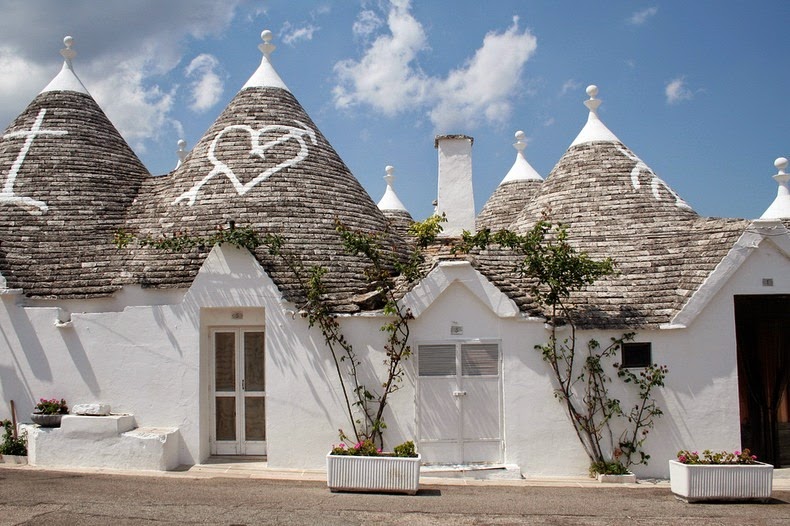
Trulli were constructed using roughly worked limestone boulders collected from neighboring fields. The structural walls are laid directly on the bedrock, after removal of the topsoil when necessary. The walls are pierced by small windows, while fireplaces, ovens and alcoves are recessed into the thickness of the walls. The roofs are constructed in two layers with an outwardly tilted layer of limestone on the outside to prevent rainwater from trickling in. The roofs terminate in a decorative pinnacle, often with ingenious provisions for collecting rainwater using projecting eaves at the base of the roof which divert the water through a channeled slab into a cistern beneath the house.
The interiors are equipped with wooden fittings, such as door frames, barrel-vaulted niches, etc., and in some of the larger trulli there is a second story formed from a wooden floor and reached by means of a wooden staircase.
The thick stone walls of a trullo shielded the inhabitants from the hot sun creating a pleasantly cool interior in the summer. However, during the winter months, the trullo becomes chillingly cold. The condensation of moisture given off by cooking and breathing makes it difficult to feel warm even in front of the fire. The inhabitants simply leave the doors open during the day to keep the interior dry, and live more outdoors than in.
Truli construction started in the mid-16th century and continued into the early 20th century. Construction of new trulli quickly declined from the 19th century. As labour cost began to rise in the twentieth century, the sheer expense of handling the hundreds of tons necessary for building a single house became prohibitive.
New trulli are no longer built in Alberobello. The surviving ones, from the 18th, 19th and the first decades of the 20th century, are now used as stores, restaurants, and lodging, and many are still inhabited by locals. Because of its unique collection of some 1,500 trulli in an urban environment, Alberobello was designated a UNESCO world heritage site.
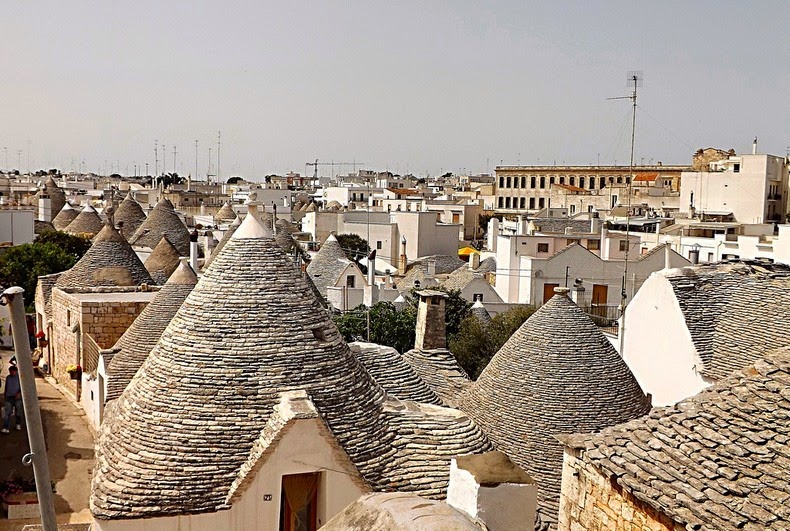
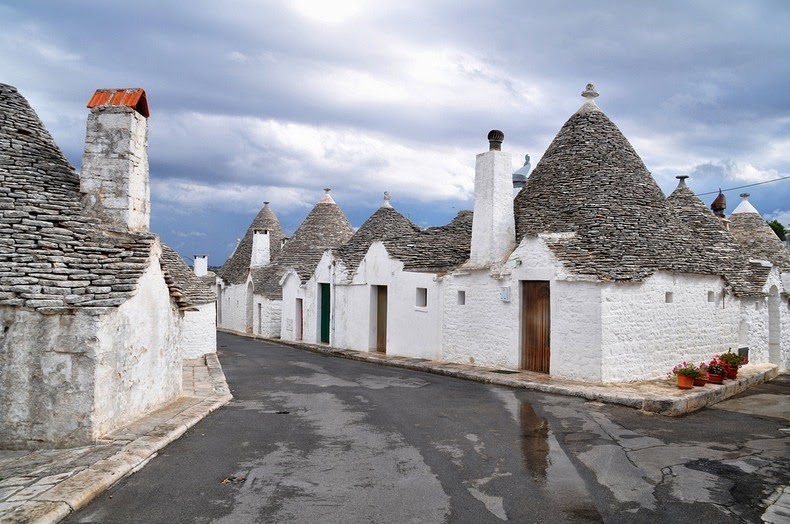
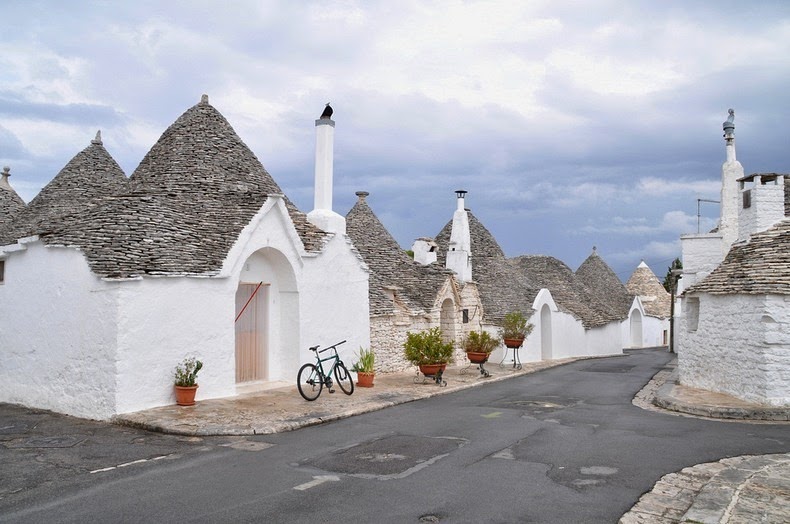
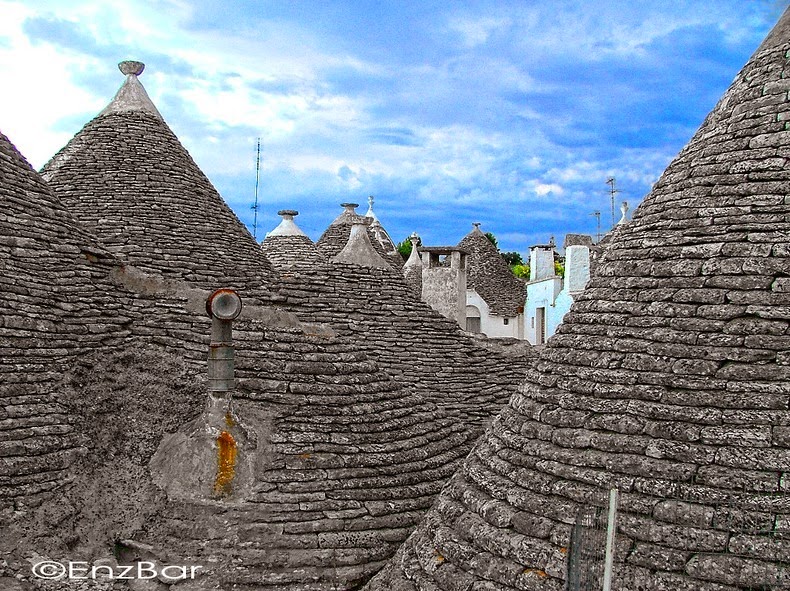
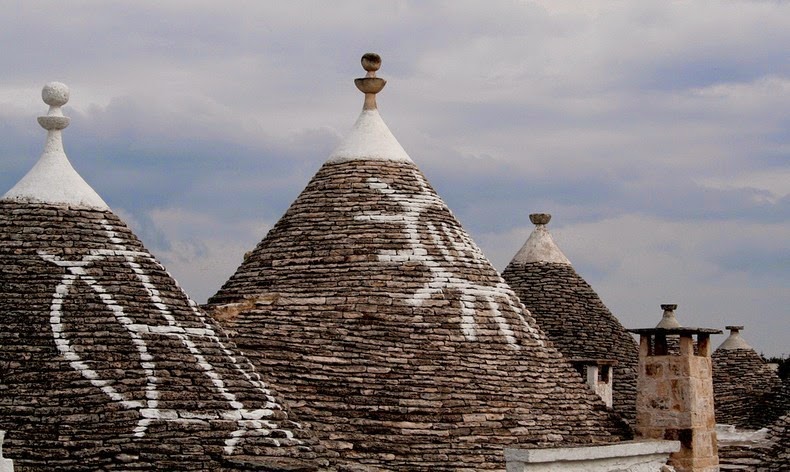
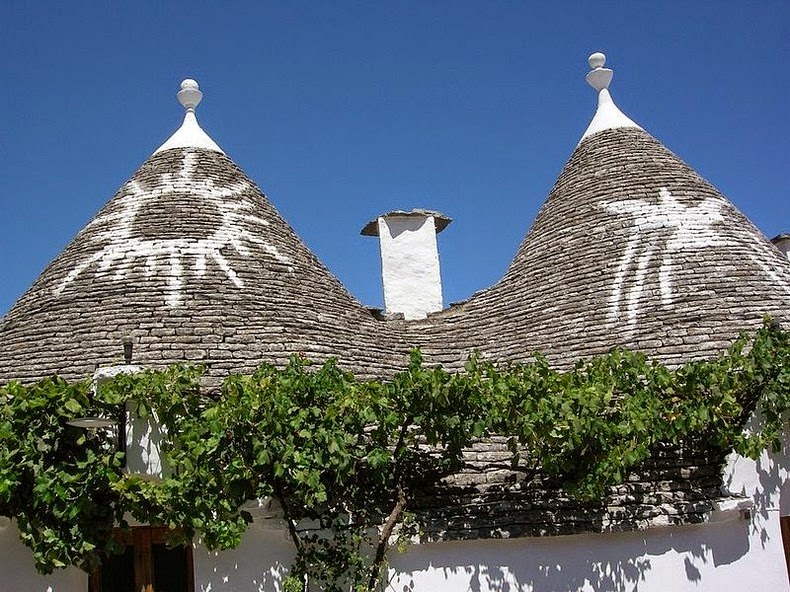
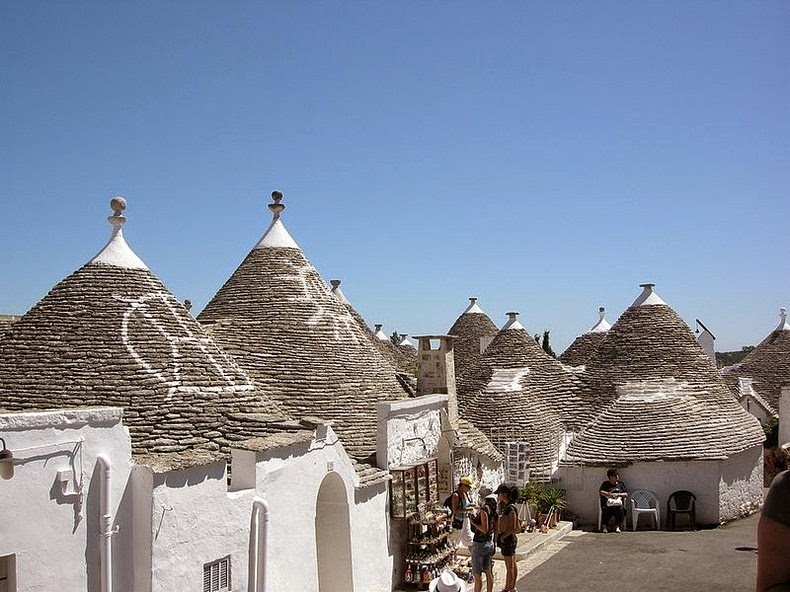
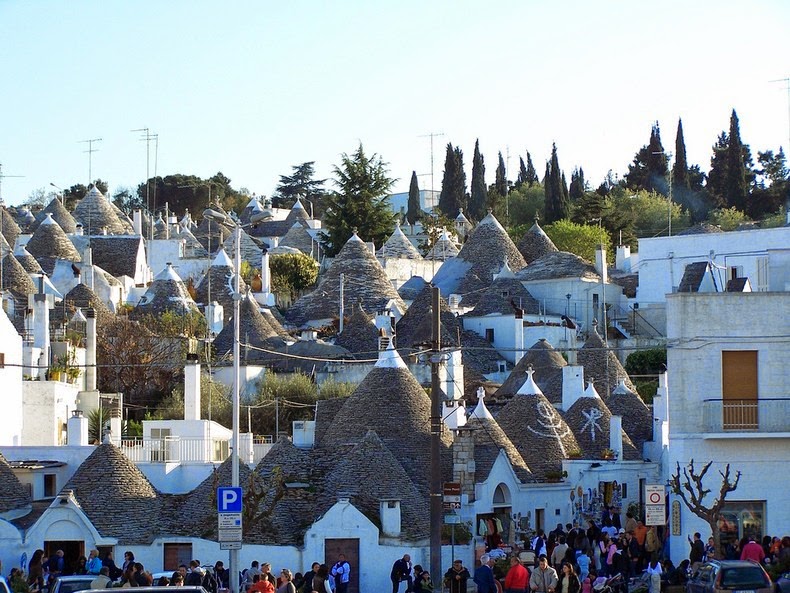



Comments
Post a Comment